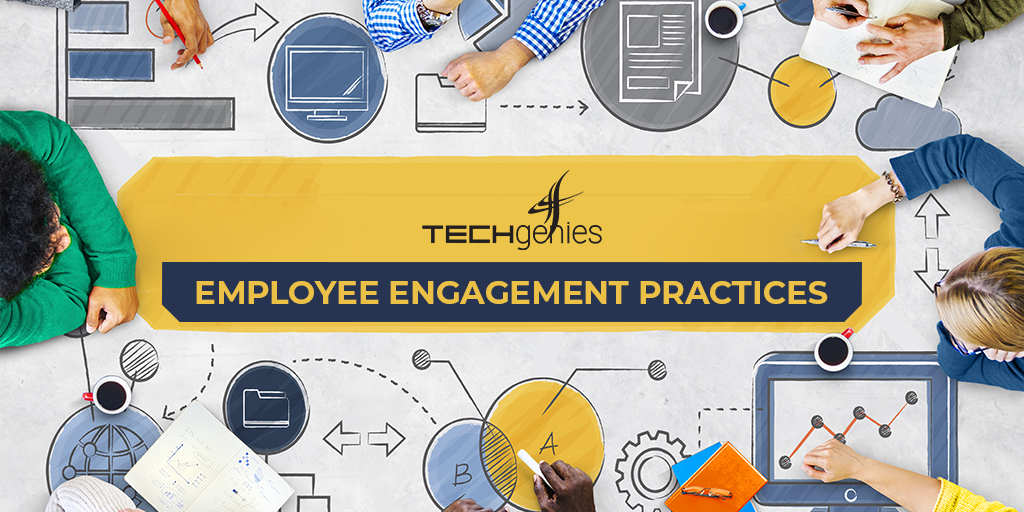Employee engagement is closely tied to employee performance, according to research conducted by Gallup, which means any business looking to have high performing employees must prioritize employee engagement.
In a business world where organizations often lean on outsourced or nearshored teams, employ dispersed teams from Mexico to the Philippines to the United States, and rely on staff augmentation, it may seem that traditional means of employee engagement have gone by the wayside.
In Deloitte’s 2019 Human Capital Trends survey, 84 percent of respondents said their businesses needed to rethink the workforce experience in order to improve workforce productivity. Reimagining the experience starts with engaging employees. Whether your business is looking to engage an augmented IT team specifically or trying to adopt better employee engagement practices overall,
Here are 10 employee engagement practices to consider.
- Keep learning. Macro trends like artificial intelligence (AI) acceleration and automation are, we all know, poised to disrupt the way we do business. In Deloitte’s survey, 86% of respondents said they needed to “reinvent their ability to learn.” Prioritize professional development programs that not only enable your employees to do their currents well, but that arm them to do their futures ones better as well. People often cite the inability to develop as a reason for leaving – so don’t give it to them.
- Take responsibility. Deloitte dubs this the “social enterprise,” a nod to the responsibility an organization can take – beyond the obvious priority of driving a profit – to focus on improving life for its customers, employees, and community.
- Go analog. Even in a digital world, building human connections among your teams is critical. Encourage teams to pick up the phone, create a personally focused Slack channel, and build real relationships with one another.
- Get the tools right. This one topped the charts in Deloitte’s 2016 Human capital Trends report for engagement around the world – infrastructure that helps employees do their jobs well tends to make employees feel more engaged. This extends beyond employee a solid CRM software into more simple adaptions, like security protocols. When employees have to remember 6 different passwords just to access all their productivity tools, it’s easy to feel frustrated – and to waste time.
- Treat adults like adults. Almost universally, more autonomy and responsibility can boost engagement, according to the Society for Human Resource Management. Giving employees the freedom to elect how to do their jobs and when to complete their tasks (in adherence to deadlines, of course) motivates them.
- Treat employees as individuals. Expect your managers to get to know their employees as individuals, understanding what motivates (and demotivates them).
- Listen. Listening to employees unlocks a multitude of benefits for organizations. Not only does it improve employee engagement to feel heard and valued, but it can also provide innovative ideas that improve efficiency at the organization. Technology can even assist with this, whether that means implementing text analysis to predict problems or harnessing people analytics data to predict factors that spike turnover.
- Give – or Actually Shout – Shout outs for Good Work. Recognition and rewards are motivating – that’s a given. But businesses don’t have to always offer recognition with a dollar sign attached to, and instead, they can get creative about what that praise looks like. At Yum!, leaders take turns parading around the office playing a cacophony created by kazoos, tambourines, horns, and cowbells, all in celebration of the handful of people they’re shouting out, SHRM reports.
Businesses can also implement social software that enables employees to publicly give kudos or generate awards publicly on LinkedIn.
- Don’t Skimp on Onboarding. One-third of new hires left their jobs after just six months, according to an SRHM survey – a sign that businesses have just about half a year to engage their newest additions before they start to disengage. If employees don’t feel confident that can perform their jobs well, it’s likely they’ll be confused, frustrated, and ultimately, disengaged. Establish a successful onboarding and training program that equips employees to do their jobs well – and encourages plenty of feedback along the way.
- Create and broadcast organizational goals. Employees want to know what they’re working toward, and understand the role they play in helping to reach those goals. Forbes recommends that businesses Establish goals at an annual, semi-annual, quarterly, and monthly basis and assess achievements regularly with employees.
Is your business looking to boost employee engagement? Whether you need to augment your IT team with fully engaged professionals dedicated to your business success or are looking to launch a custom software development project to support existing employee engagement TechGenies is here to help. To start a conversation about your IT needs, please contact info@techgenies.com.


